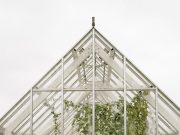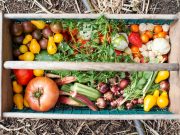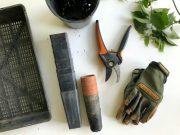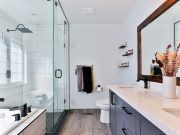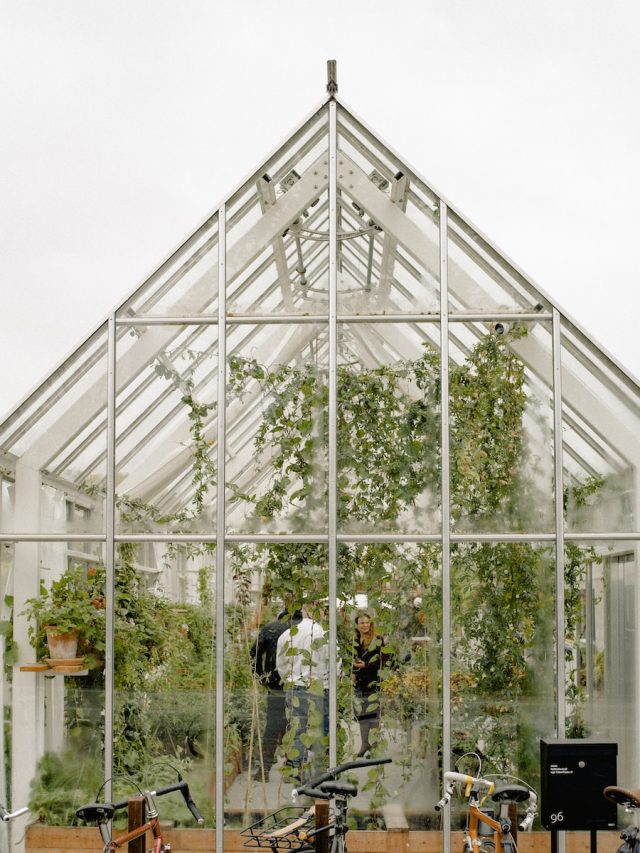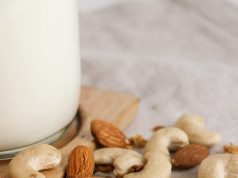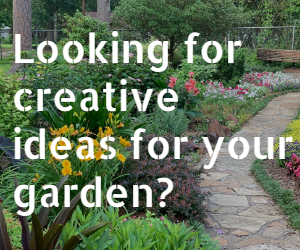Introduction
Are you a gardening enthusiast looking to take your green thumb to the next level? Or maybe you’re interested in growing your own fresh produce all year round? If so, you might want to consider investing in a greenhouse. A greenhouse is a structure designed to provide a controlled environment for plants to grow in, allowing you to grow plants that might not otherwise survive in your climate.
In this blog post, we’ll explore the benefits of having a greenhouse in your garden, from extending your growing season to providing a safe haven for your plants. We’ll also cover different types of greenhouses, what to consider when choosing one, and tips for setting up and maintaining your own greenhouse. So whether you’re a seasoned gardener or just starting out, read on to discover how a greenhouse can help you cultivate a thriving garden.
Choosing the right location
Choosing the right location for your greenhouse is crucial for the success of your gardening venture. A well-chosen site can ensure maximum light exposure, proper ventilation, and optimal plant growth conditions. Here are some key factors to consider when selecting a suitable site for your greenhouse:
- Sun Exposure: The location of your greenhouse should receive ample sunlight throughout the day. Plants require a minimum of 6 hours of direct sunlight to grow properly. Therefore, choose a location exposed to the sun for most of the day, preferably facing south or southeast.
- Wind Exposure: Proper ventilation is crucial for maintaining the right temperature and humidity levels in your greenhouse. However, too much wind can damage your plants and even collapse your greenhouse. Therefore, select a location sheltered from strong winds, such as behind a building or fence.
- Drainage: The site should be well-drained to prevent waterlogging, which can lead to root rot and other fungal diseases. Avoid areas prone to flooding or standing water, as well as low-lying areas.
- Proximity to Water and Electricity: Your greenhouse will require a reliable source of water and electricity for heating, lighting, and irrigation. Therefore, choose a location close to a water supply and an electrical outlet.
- Soil Preparation: Before setting up your greenhouse, prepare the soil to ensure optimal growing conditions. Remove any debris, weeds, or rocks from the area, and loosen the soil to a depth of at least 12 inches. Add organic matter, such as compost or well-rotted manure, to improve soil fertility and structure.
In addition to the above factors, you should also consider the size and shape of your greenhouse and how it will fit into your garden or backyard. Take into account any existing structures, trees, or other obstacles that might affect the placement of your greenhouse.
In summary, choosing the right location for your greenhouse is crucial in creating a successful and thriving garden. By considering factors such as sun exposure, wind exposure, drainage, proximity to water and electricity, and soil preparation, you can ensure that your plants have the best possible growing conditions. With careful planning and preparation, your greenhouse can be a productive and rewarding addition to your garden.
Selecting the perfect design
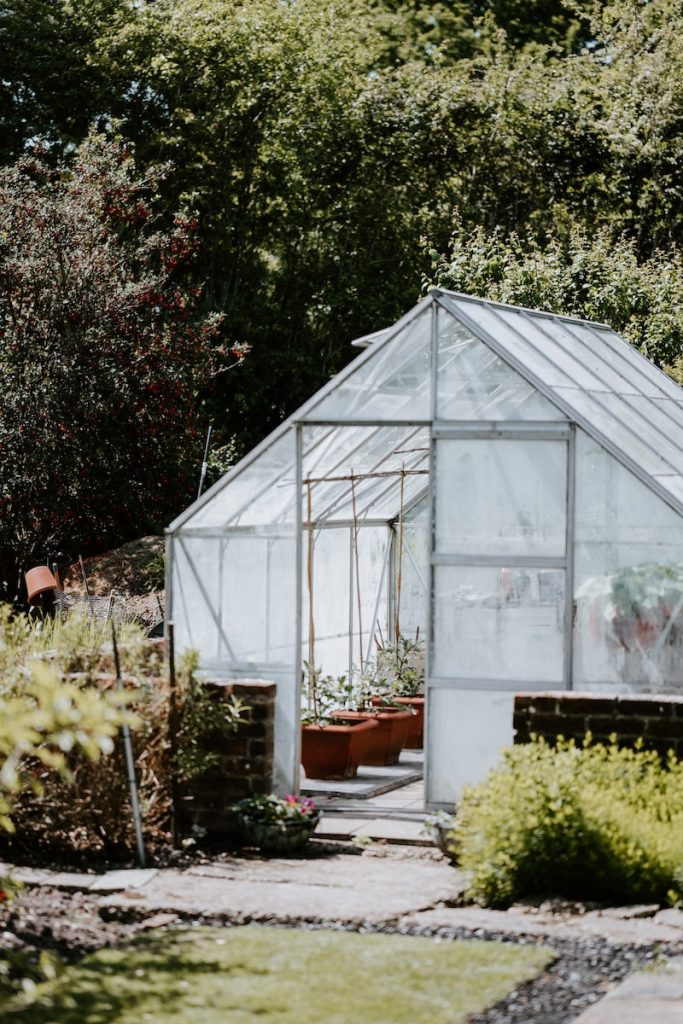
Selecting the perfect design for your greenhouse is an important step in creating a functional and productive growing space. Several types of greenhouses are available, each with unique features and benefits. Here’s a breakdown of some of the most common types of greenhouses and their pros and cons:
- Lean-to Greenhouses: A lean-to greenhouse is a half-greenhouse attached to an existing structure, such as a house or garage. This type of greenhouse is ideal for smaller gardens or yards with limited space. Lean-to greenhouses are relatively easy to install and can be a cost-effective option. However, they may be limited in size and may not receive optimal sunlight exposure.
- Freestanding Greenhouses: A freestanding greenhouse is a standalone structure that can be placed anywhere in your garden or yard. This type of greenhouse provides maximum sunlight exposure and can accommodate larger plants and growing spaces. Freestanding greenhouses come in various shapes and sizes, from traditional A-frame designs to modern geodesic domes. However, they may require more space and can be more expensive to install.
- Hoop House Greenhouses: A hoop house greenhouse is a low-cost, temporary structure made of PVC pipe or metal hoops covered with a polyethylene sheet. This type of greenhouse is ideal for seasonal growing and can be easily dismantled and stored during the off-season. Hoop house greenhouses are relatively inexpensive and easy to construct, but they may not be as durable as other types of greenhouses and may require frequent maintenance.
- Window-Mounted Greenhouses: A window-mounted greenhouse is a small, compact greenhouse attached to a window or wall. This type of greenhouse is ideal for apartment dwellers or those with limited outdoor space. Window-mounted greenhouses are relatively inexpensive and can be easily moved from one location to another. However, they may be limited in size and may not provide optimal growing conditions.
When selecting the perfect design for your greenhouse, it’s essential to consider your gardening needs, budget, and available space. Freestanding greenhouses are ideal for those with larger gardens or yards, while lean-to greenhouses are a good option for smaller spaces. Hoop house greenhouses are a low-cost alternative for seasonal growing, while window-mounted greenhouses are ideal for those with limited space.
Materials to use
The choice of materials for your greenhouse significantly affects its overall performance and durability. There are several materials to choose from, each with its own advantages and disadvantages. Here are some of the most commonly used materials for greenhouses:
- Glass: Glass is the traditional greenhouse material and offers excellent light transmission, durability, and longevity. It is also relatively easy to clean and provides an aesthetically pleasing appearance. However, glass is heavy and fragile, making it more difficult and expensive to install. It is also more susceptible to breaking in extreme weather conditions.
- Polycarbonate Sheets: Polycarbonate sheets are a popular alternative to glass as they are lightweight, durable, and shatterproof. They also offer good insulation and UV protection for your plants. Polycarbonate sheets come in different thicknesses, with thicker sheets offering better insulation and being more expensive. However, polycarbonate sheets may turn yellow over time, reducing their light transmission and visual appeal.
- Plastic Film: Plastic film is cost-effective for greenhouses and offers good insulation and light transmission. It is also lightweight and easy to install. However, plastic film is less durable than glass or polycarbonate sheets and may require frequent replacement due to tearing, puncturing, or yellowing.
- PVC: PVC is a lightweight and affordable material often used for hoop houses and DIY greenhouse construction. It is also easy to assemble and disassemble. However, PVC is not as durable as other materials and may degrade over time, releasing harmful chemicals into the environment.
When choosing materials for your greenhouse, it’s important to consider sustainability considerations. Glass and polycarbonate sheets are recyclable and can be reused or repurposed at the end of their lifespan. Plastic film and PVC, on the other hand, are not easily recyclable and can contribute to plastic pollution. Therefore, it’s important to consider the environmental impact of your material choices and opt for sustainable options wherever possible.
Ventilation and insulation
Maintaining proper temperatures inside a greenhouse is essential for ensuring healthy plant growth and maximizing yields. Proper ventilation and insulation are two key strategies for controlling the temperature inside your greenhouse. Here are some techniques to help you maintain optimal temperature levels and avoid overheating or under-heating:
- Ventilation: Proper ventilation is essential for maintaining optimal temperature and humidity levels inside your greenhouse. The most common types of ventilation systems include ridge vents, side vents, and fans. Ridge vents are located at the highest point of the greenhouse and allow hot air to escape, while side vents allow fresh air to enter. Fans can be used to circulate air and prevent hot spots from forming. Automated ventilation systems can also be used to control temperature and humidity levels.
- Insulation: Insulation helps to prevent heat loss during the winter and keeps the greenhouse cool during the summer. The most common types of insulation include double-layered plastic film, insulated glass, or polycarbonate panels. Bubble wrap can also be used as a cheap and effective insulation material.
- Shade Cloth: During the summer, shade cloth can be used to reduce the amount of sunlight entering the greenhouse and prevent overheating. Shade cloth can be made from various materials and comes in different densities to allow for varying levels of light transmission.
- Thermal Mass: Thermal mass refers to the ability of a material to absorb and store heat. Using materials with high thermal mass, such as concrete or stone, can help to regulate temperature swings inside the greenhouse by absorbing excess heat during the day and releasing it at night.
- Heating and Cooling Systems: Heating and cooling systems can regulate temperature and humidity levels inside the greenhouse. Options include radiant heating, forced air, and evaporative cooling systems. It’s important to choose a system appropriate for the size of your greenhouse and your local climate.
In summary, proper ventilation and insulation are essential for maintaining optimal temperature and humidity levels inside your greenhouse. By using techniques such as ventilation systems, insulation, shade cloth, thermal mass, and heating and cooling systems, you can create a comfortable and productive growing environment for your plants. Remember to choose a system appropriate for the size of your greenhouse and your local climate to ensure the best results.
Irrigation systems and lighting options
Both are essential components of any greenhouse system. Here are some irrigation and lighting options to consider for your greenhouse:
Irrigation Systems:
There are several irrigation systems to choose from, depending on the plants you are growing and your preferences. Some popular options include:
- Drip Irrigation: Drip irrigation involves tubes delivering water directly to the plant’s roots. This method is highly efficient and helps to prevent water waste.
- Sprinkler Irrigation: Sprinkler irrigation involves spraying water over the plants, similar to how rain falls. This method is suitable for larger greenhouses and can be automated for convenience.
- Flood Irrigation: Flood irrigation involves flooding the greenhouse floor with water and allowing it to soak up through the soil. This method is suitable for certain crops and can be cost-effective, but it may lead to water waste.
Lighting Options:
Proper lighting is essential for healthy plant growth and development. Here are some lighting options to consider:
- Natural Sunlight: Natural sunlight is greenhouses’ most cost-effective and energy-efficient lighting. However, ensuring that your greenhouse receives enough sunlight throughout the day to meet your plants’ needs is important.
- Artificial Lighting: Artificial lighting is necessary for supplementing natural light or providing light during winter. LED lights are the most energy-efficient and long-lasting option and can be programmed to mimic natural sunlight.
- Light-Deprivation Systems: Light-deprivation systems involve covering the greenhouse with blackout material to control the amount of light plants receive. This method can induce early flowering or protect sensitive crops from light pollution.
It’s important to consider the specific needs of your plants when choosing an irrigation and lighting system. Some plants require more water or different lighting conditions than others. Additionally, automated systems can help to save time and reduce the risk of human error. With the right irrigation and lighting systems in place, you can create an optimal growing environment for your plants and maximize your yields.
Ensuring pest control and hygiene in your space
Pest control and hygiene are crucial aspects of maintaining a healthy and productive greenhouse environment. Pests can quickly spread diseases and damage plants, while poor hygiene can lead to harmful fungi and bacteria growth. Here are some tips to ensure effective pest control and hygiene in your greenhouse:
Preventing Pest Infestations:
The best way to control pests in your greenhouse is to prevent them from entering in the first place. Here are some steps you can take to keep pests at bay:
- Install screens on windows and doors to prevent insects from entering.
- Use sticky traps and barriers to trap crawling pests.
- Keep the greenhouse clean and free from debris, which can attract pests.
- Inspect plants regularly for signs of pests and remove any infected plants immediately.
- Use natural pest control methods, such as releasing beneficial insects or using organic insecticides.
Cleaning and Maintenance Tips:
- Good hygiene practices are essential for preventing the growth of harmful fungi and bacteria in your greenhouse. Here are some tips to keep your greenhouse clean and well-maintained:
- Regularly sweep and disinfect the greenhouse floor to remove any debris or plant material that can attract pests or harbor disease.
- Wash pots and trays before reusing them to prevent the spread of disease.
- Clean and disinfect tools after each use to prevent cross-contamination.
- Monitor humidity levels and provide adequate ventilation to prevent the growth of mold and mildew.
- Dispose of any dead plants or plant material immediately to prevent the spread of disease.
By following these tips, you can ensure effective pest control and hygiene in your greenhouse. Regular cleaning and maintenance practices can help prevent disease spread and keep your plants healthy and productive. Additionally, natural pest control methods can help to control pests without using harmful chemicals, which can benefit both the environment and your plants.
Conclusion
In conclusion, building a greenhouse can provide a range of benefits, from giving you access to fresh produce all year round to adding an elegant touch to your indoor or outdoor space. To ensure a successful greenhouse, it’s important to carefully consider factors such as location, design, materials, ventilation, irrigation, and pest control. With the right planning and maintenance, you can create an optimal plant-growing environment and maximize your yields.
Moreover, greenhouses can be a beautiful addition to your home décor, as they offer a unique blend of form and function. Not only do they provide an attractive space for growing plants, but they can also supplement your indoor decoration with a touch of natural beauty. Plus, the joy of watching your plants grow and bloom is a rewarding experience that can help to reduce stress and improve your overall well-being.
In summary, building a greenhouse is a worthwhile investment that can enhance your lifestyle in many ways. It can provide fresh, healthy produce, improve the air quality in your home, and add a touch of natural beauty to your indoor or outdoor space. By carefully considering the factors outlined in this blog and following best practices for greenhouse maintenance, you can create a thriving ecosystem that will benefit both you and your plants.








